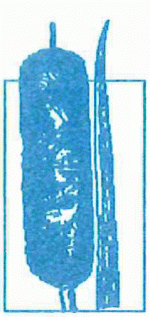In a collaborative project conceived through discussions at the 1992 LTER All Scientists Meeting, Alan Knapp (Kansas State University and Konza Prairie LTER) and Joseph Yavitt (Cornell University and Hubbard Brook LTER), are studying the role of cattail-dominated wetlands as a source of tropospheric methane. These wetlands are ideal systems for study since cattail (Typha latifolia) occurs throughout North America, and these plants act as conduits for methane release from sediments to the troposphere. Environmental controls and plant physiological mechanisms that determine fluxes are especially poorly known.
Drs. Knapp and Yavitt have obtained funding from the National Geographic Society to conduct experiments and field surveys of methane emissions from cattail-dominated wetlands along a latitudinal gradient. They have already carried out sampling at Sevilleta and Konza, where cattails are relatively inconspicuous but nevertheless important, to Cedar Creek, where cattail wetlands are prominent. Preliminary results suggest higher flux rates (per meter square basis) at Sevilleta and Konza than at Cedar Creek. They hope to add other LTER sites in future sampling. The data that result from this blending of ecological, plant physiological and geochemical research will be important for the development of more accurate global change models.
For further information: Alan Knapp, Kansas State University, Division of Biology, Ackert Hall, Manhattan, Kansas 66506-4901, 913-532-7094.

 Enlarge this image
Enlarge this image